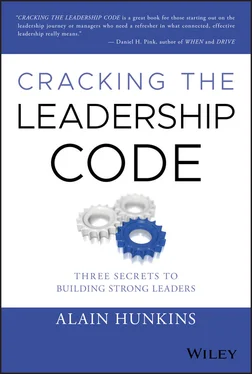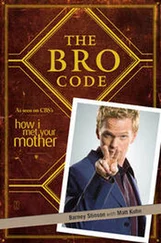Because the speed of market changes was so slow, leaders weren't worrying about external threats to their business model. What they did last month they'd do next month. This plodding pace enabled leaders to spend their time and energy on controlling the workforce to preserve the status quo.
Less Access to Information
At the start of the 20th century, employees had no way of knowing and no way of finding out if the grass was greener at some other company. There was no LinkedIn to network for new job opportunities, no monster.comto read up on new job postings, and no glassdoor.comto find out if the company you're interviewing with is a place that you'd actually want to work.
Living in this information vacuum, workers were stuck in their circumstances. However, because the lack of information was such a cultural norm, no one expected anything else. They just put up with their situation.
Through its first few decades, command-and-control achieved tremendous results. In this new industrial era, it was considered an essential part of business success. Its philosophy expanded from factories to many other sectors of the economy. As it grew, it also migrated to business school classrooms, where it became standard dogma for much of the 20th century.
SCIENTIFIC MANAGEMENT'S INFLUENCE ON BUSINESS SCHOOLS
Did you ever wonder where business schools came from? They haven't been around forever. Harvard University was the first American university to offer a Master's in business administration. Founded in 1908, it based its first-year curriculum on Frederick Taylor's principles of scientific management. The program was built on analysis, synthesis, logic, rationality, and efficiency.
The MBA approach to managing a business was built on the belief that an organization (and its people) functioned like a machine. With proper tinkering on the part of management, the machine could be engineered for the ultimate prize: continuous peak efficiency. Every challenge the organization faced was an engineering problem to be solved. Sound familiar?
If you listen closely to the language of business, you can still clearly hear the language of engineering. Its mechanistic, dehumanizing influence has affected beliefs, words, and behaviors in the workplace for more than a century. Some common examples of this include these concepts:
Your job fits in a box on the bottom of the org chart.
You report to your superior. You are his or her subordinate. You report up to that person.
You are a rank- and-file employee.
If we don't have direct reports, we may have dotted-line responsibilities.
Salaries are one of the biggest costs we incur around here.
We don't have enough human resources.
Let's deploy for this new product launch.
I'm going to send this up the food chain for approval.
Let's interface before the 3 p.m. meeting.
Get the proposal ready double-time!
It's important that we drill this down to the front lines.
We'll get this out to the masses.
How would it make you feel to know that there are leaders who are meeting together, trying to find the best way to drill stuff into you, along with the rest of the frontline masses?
In large organizations, personnel networks were modeled on the military, with layer on layer nested into the chain of command. Control was established through rigid hierarchy, structures, and processes. Rules were designed to maintain order and the status quo. Going outside the lines was considered a rebellious act and insubordination.
In this system, newly minted MBA graduates would join “high-potential” programs in large companies. Once on board, they would rely on the strengths that got them jobs in the first place: analysis and problem-solving. They'd in turn become the next generation of business leaders, continuing this cycle of mechanical thinking they'd known for their whole professional lives.
The rule of thumb was that employees were expected to be loyal and obedient. Junior employees knew their place: wait your turn, pay your dues, put in your time, and you'll be rewarded with a chance to climb the ranks. Then, you'd gain more money, prestige, power, a better parking space, and the corner office.
THE LEGACY STOPS PAYING DIVIDENDS
For much of the 20th century, the value proposition of the corporation was that if you were a dutiful employee, you'd have a job for life, a gold watch after 20 years of work, and a comfortable pension waiting for you in retirement. Things hummed along like this for decades, and traditional leaders kept managing using their rulebooks and regulation manuals.
This was the legacy that was passed down from one generation of leader to the next. Maybe this is the leadership recipe that you inherited: keep things orderly, and all will be well.
There's just one problem: it doesn't work anymore.
Twenty years with the same company? Not likely. Comfortable pension? Even less likely. Things humming along smoothly? Not a chance. The man in the grey flannel suit is long gone. He's been replaced by members of the free agent nation.
Command-and-control is no longer a viable leadership strategy. Society has transformed, and amid these changes, the rules of business have been rewritten. The relationship of employee to employer is radically different. In this new world of work, Old-School leadership didn't really stand a chance. The next chapter explains why Old-School leadership stopped working.
Break Free of Old Leadership Paradigms
I question my inherited leadership habits.
I start with a leadership paradigm of trust, not fear.
I use a leadership language that describes people, not machines.
I understand where the command-and-control style came from, and why it lasted for so long.
Конец ознакомительного фрагмента.
Текст предоставлен ООО «ЛитРес».
Прочитайте эту книгу целиком, на ЛитРес.
Безопасно оплатить книгу можно банковской картой Visa, MasterCard, Maestro, со счета мобильного телефона, с платежного терминала, в салоне МТС или Связной, через PayPal, WebMoney, Яндекс.Деньги, QIWI Кошелек, бонусными картами или другим удобным Вам способом.












